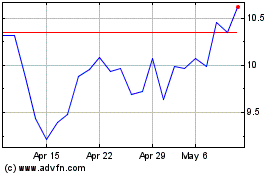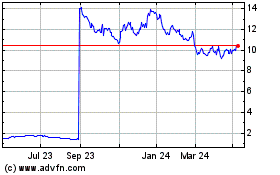PARIS—Long before Air France workers tore their managers' shirts
off, the company knew it had a staffing problem.
Nearly 10 years ago, as the freshly forged Franco-Dutch alliance
Air France-KLM was preparing to launch its own budget carrier,
management sat down with pilots to press them to accept pay cuts so
that the new unit would better compete. Paying workers at the
carrier, Transavia, as much as their Air France colleagues, "was
not the end of the world," pilot representative Philippe Raffin
said.
"Yes, it's nothing. But it's my profit margin," said Jean-Cyril
Spinetta, then chief executive of Air France-KLM.
A decade later, the standoff with pilots continues to haunt Air
France-KLM. Management sat down Thursday with workers in downtown
Paris, in a bid to relaunch negotiations over a sweeping plan
designed to fend off no-frills rivals as well as Gulf airlines
offering fancier flights to Asia.
Those talks ran aground due to pilots' refusal to fly more hours
without more pay, leaving the carrier threatening thousands of job
cuts and creating a frenzied atmosphere that fueled a worker ambush
on management earlier this month.
Years of losses have left Air France-KLM with more than €4.5
billion ($5.10 billion) in net debt at the end of June. Shares in
the airline are down almost 20% so far this year, in contrast to
many of its peers who are racking up hefty profits.
"Our costs are higher than our competitors and our economic
performance is not at their level," said Air France-KLM CEO
Alexandre de Juniac in a recent television interview.
The travails of Air France-KLM expose the shortcomings of its
merger, unveiled with much fanfare in 2004 as the new model for
national carriers. While the airlines combined their businesses
financially, they kept largely separate operational structures,
reflecting regulatory hurdles on international landing rights,
political interests and strong labor unions.
"We didn't imagine competition would transform to that point,"
said Jean-Marc Espalioux, an Air France board member at the time.
"The merger would yield synergies and commercial alliances would
boost revenue-that was it."
Since then, Air France has struggled—even with a series of
restructuring plans—to compete with rivals and slash costs.
By contrast, British Airways battled through protracted labor
disputes to force cost savings that have translated into
double-digit profitability. That focus was applied again when
British Airways merged with Spain's Iberia to create the
International Consolidated Airlines Group that now includes Vueling
and Aer Lingus. Iberia is now profitable and shares in IAG are up
almost 25% this year.
Air France has wrestled especially with its powerful pilots who
have slowed the company's efforts to expand Transavia.
Air France handed over some of that leverage: Under a 2007
bargaining agreement, pilots have a say in the number of aircraft
the budget unit can operate from France.
"Pilots have the nuclear button, they have the capacity to
ground the airline," said Jean-Pierre Bernasse, a union
representative for Air France maintenance crew. Other workers
aren't as unionized or can be replaced during a strike, he
said.
When Air France sought to muscle up Transavia a year ago, pilots
balked. The ensuing two-week pilot strike in September 2014 cost
Air France almost €425 million, without which it would have posted
a profit for the year.
"KLM workers were inflamed that Air France's pilots led the
group into a loss," said Jacob de Vries, a ground staff union
representative at the Dutch carrier.
Since then, pilots have yielded some ground, agreeing after the
strike last year to increase Transavia's fleet in France. Air
France narrowed losses in 2014 and reduced its payroll size without
firing workers; some employees, such as technicians, have accepted
working more days and taken pay cuts.
Still, its expenses are much higher than many rivals.
Air France's unit costs, measured by costs per available seat
kilometer, were 13% higher than KLM's last year and their combined
costs are 12% above IAG's, according to the CAPA Center for
Aviation. Air France-KLM's cost disadvantage is even greater
against budget carrier EasyJet, with 38% higher costs.
Productivity of Air France-KLM pilots lags that at competitors.
On average, each pilot for Ryanair Holdings PLC, Europe's largest
budget airline, generates 40% more available seat miles—a standard
measure of airline capacity—than a typical Air France-KLM
pilot.
Now, Air France is scrambling to adapt. It is canceling some
aircraft orders, shuttering some long-haul routes and pushing
pilots to fly more for the same pay.
"It's like a pay cut," said Emmanuel Mistrali, said a spokesman
for the main pilots union SNPL.
Competition is set to intensify. Barcelona-based Vueling plans
to open a base in Air France's backyard, at Charles de Gaulle
airport.
Budget airlines represent only around 17%-18% of the French
market, compared with around 30% Europe-wide, said John Grant,
executive vice president at aviation consultancy OAG.
"It is going to get a lot hotter," said Mr. Grant.
Ellen Proper contributed to this article.
Write to Inti Landauro at inti.landauro@wsj.com and Robert Wall
at robert.wall@wsj.com
Subscribe to WSJ: http://online.wsj.com?mod=djnwires
(END) Dow Jones Newswires
October 22, 2015 08:45 ET (12:45 GMT)
Copyright (c) 2015 Dow Jones & Company, Inc.
Air FranceKLM (EU:AF)
Historical Stock Chart
From Mar 2024 to Apr 2024

Air FranceKLM (EU:AF)
Historical Stock Chart
From Apr 2023 to Apr 2024
